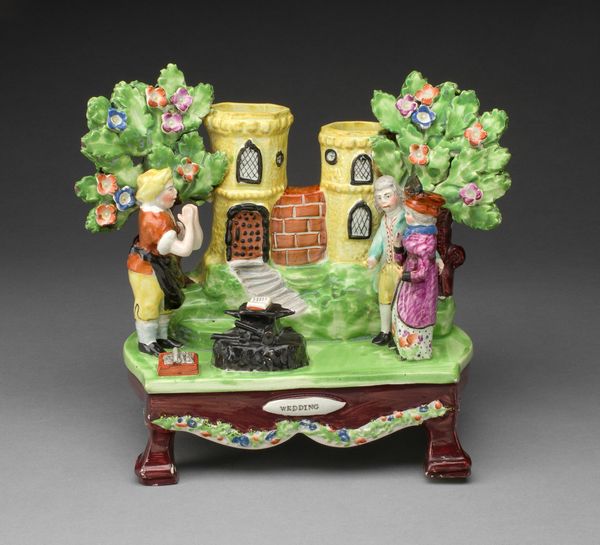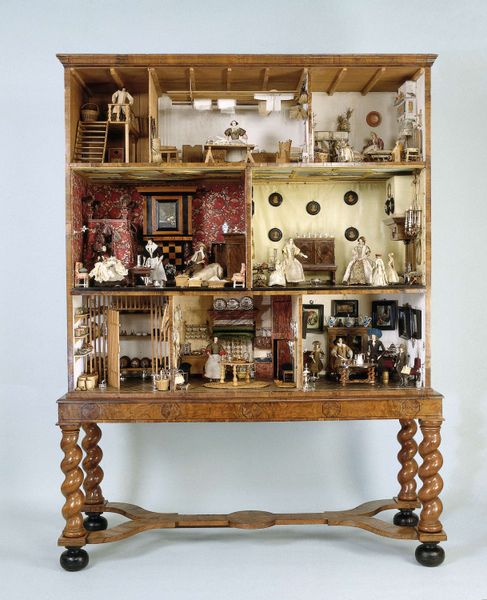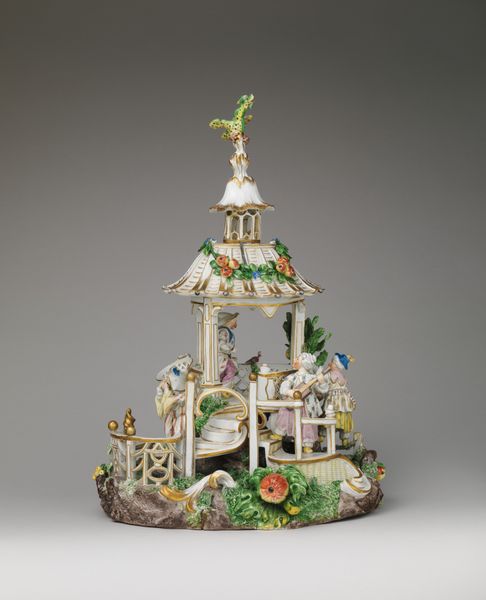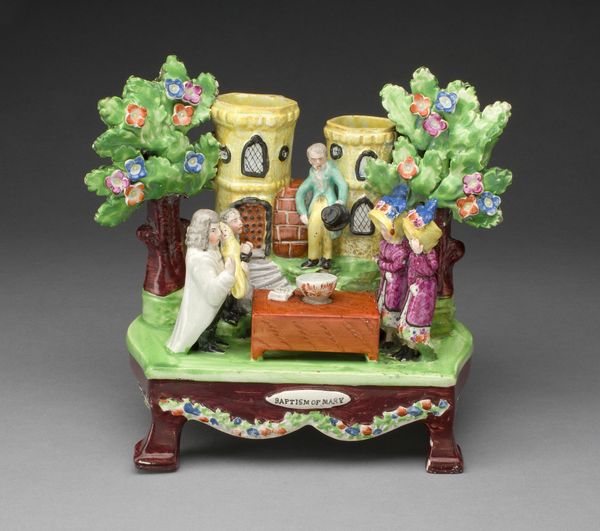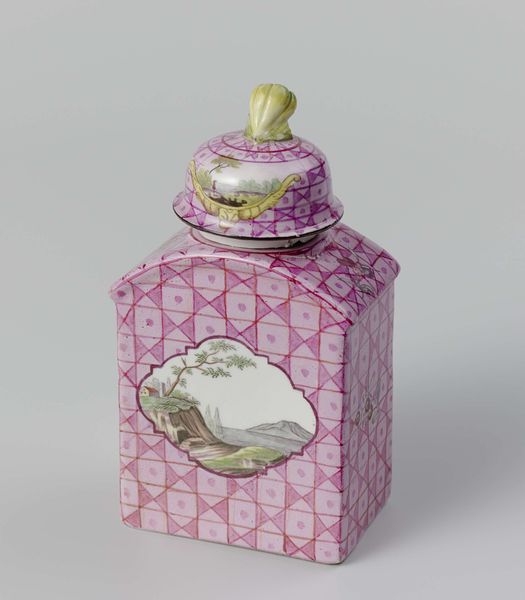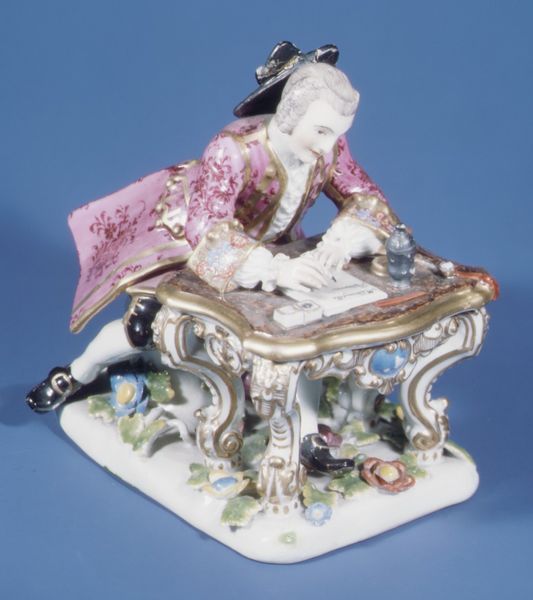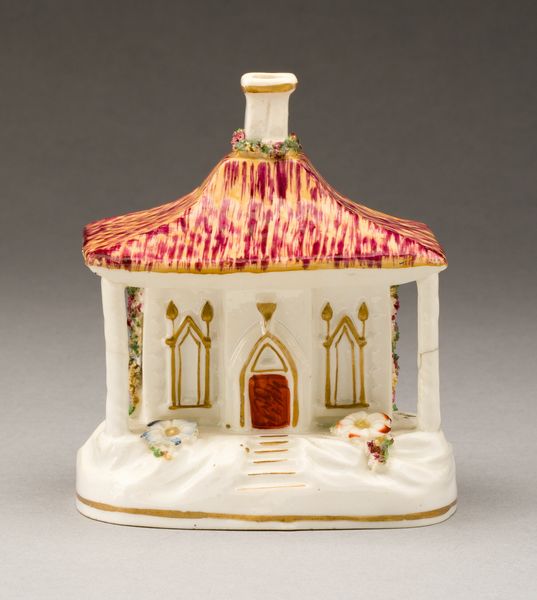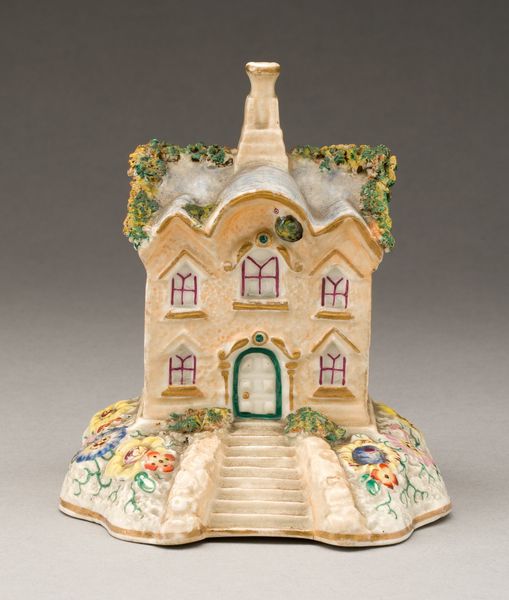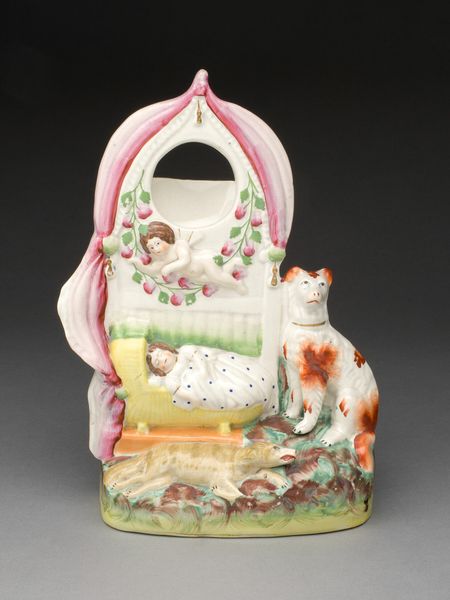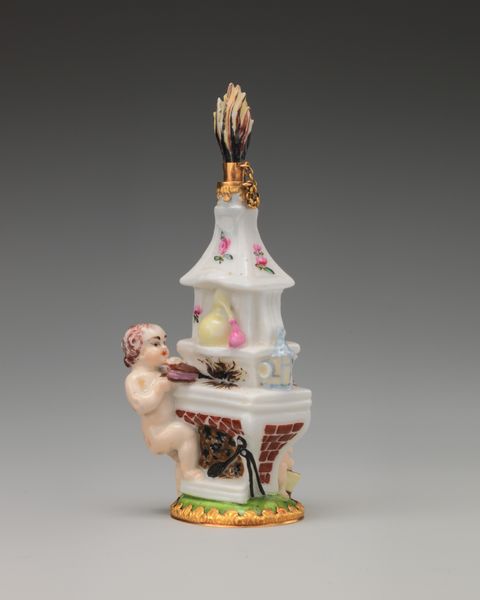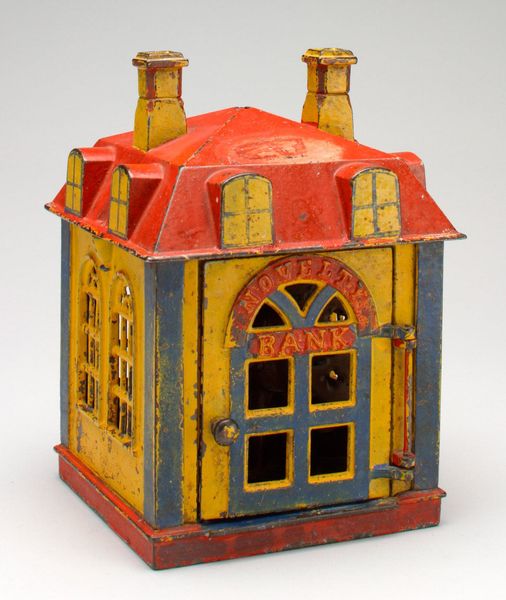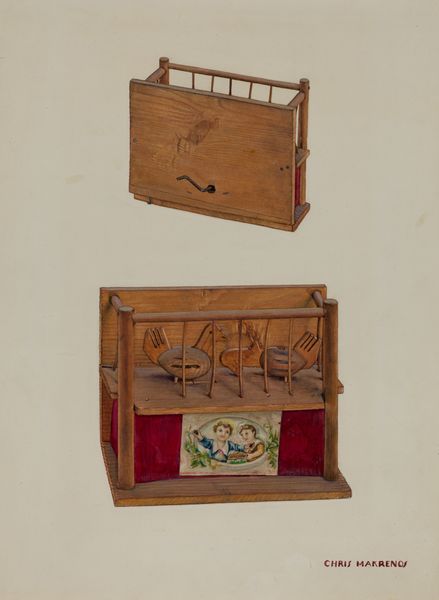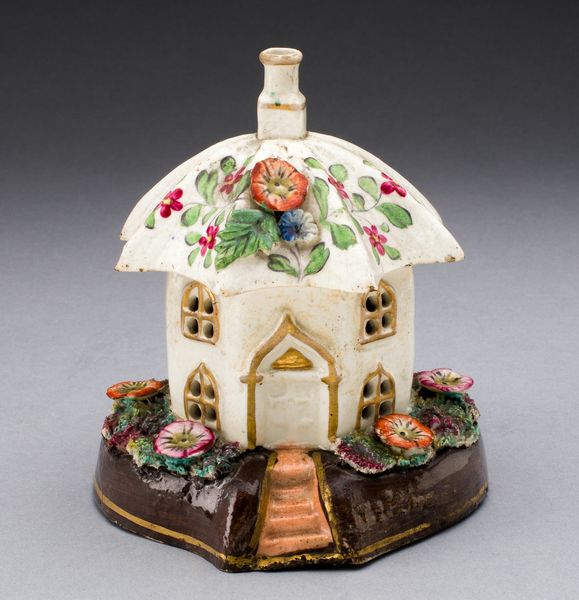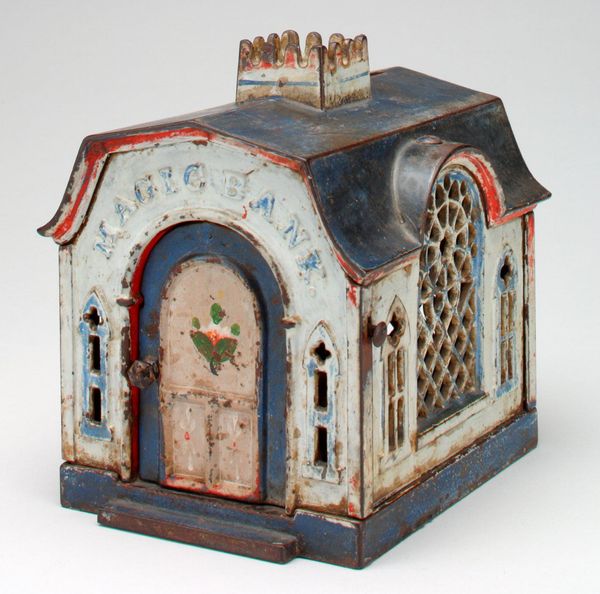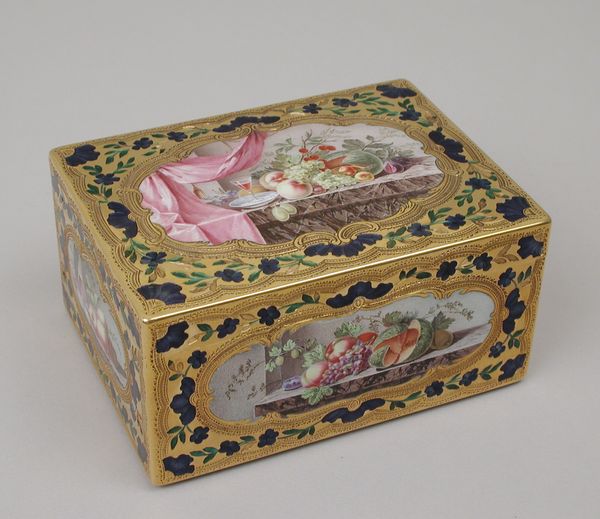
"Venetian Fair" shop with two figures 1760 - 1770
0:00
0:00
ceramic, textile, porcelain, sculpture, architecture
#
ceramic
#
textile
#
porcelain
#
figuration
#
sculpture
#
architecture
#
genre-painting
#
decorative-art
#
architecture
#
rococo
Dimensions: Overall (shop .226): 6 × 5 1/2 × 2 1/8 in. (15.2 × 14 × 5.4 cm); Height (man .227): 2 3/4 in. (7 cm); Height (woman .228): 2 1/2 in. (6.4 cm)
Copyright: Public Domain
Editor: Here we have “Venetian Fair” shop with two figures, a porcelain and textile sculpture created around 1760-1770 by the Ludwigsburg Porcelain Manufactory. It's charming! The detail in this miniature shop, all rendered in porcelain, is amazing, particularly all the textiles and trinkets on display. As I look at this piece I can’t help but imagine how it reflects everyday life and commerce of the time. What’s your take on this piece, especially considering its historical and cultural context? Curator: It's fascinating, isn’t it? Looking at this through a historical lens, pieces like this tell us so much about 18th-century European society and its aspirations. Porcelain, at this time, wasn't just a material; it was a symbol of wealth, refinement, and social status. The Ludwigsburg Manufactory, like others, was heavily supported by the aristocracy, making art production intrinsically linked to court culture. The detail, the finery…what might that suggest? Editor: It suggests a world concerned with appearances and luxury. This piece probably caters to the elite and presents an ideal of a vibrant mercantile center. It may not reflect the harsh realities of life for most. Do you think this artwork reinforces or perhaps subtly critiques these social hierarchies? Curator: It’s likely reinforcing those hierarchies. The market, while seemingly open to the public, is crafted and controlled. Remember that even something as decorative as this carries embedded values. Think of the patronage system: the elite dictated taste, which manufactories like Ludwigsburg fulfilled. It’s about more than aesthetics; it’s about power, social roles and the performative display of wealth and good taste in the Rococo era. Editor: It’s like a perfect storm of material, patronage, and cultural ideals all shaping its creation and reception. Thinking about that helps unpack so much more than what’s immediately apparent on the surface! Curator: Precisely. These decorative art pieces reveal much about power structures that influenced cultural values of their time.
Comments
No comments
Be the first to comment and join the conversation on the ultimate creative platform.
